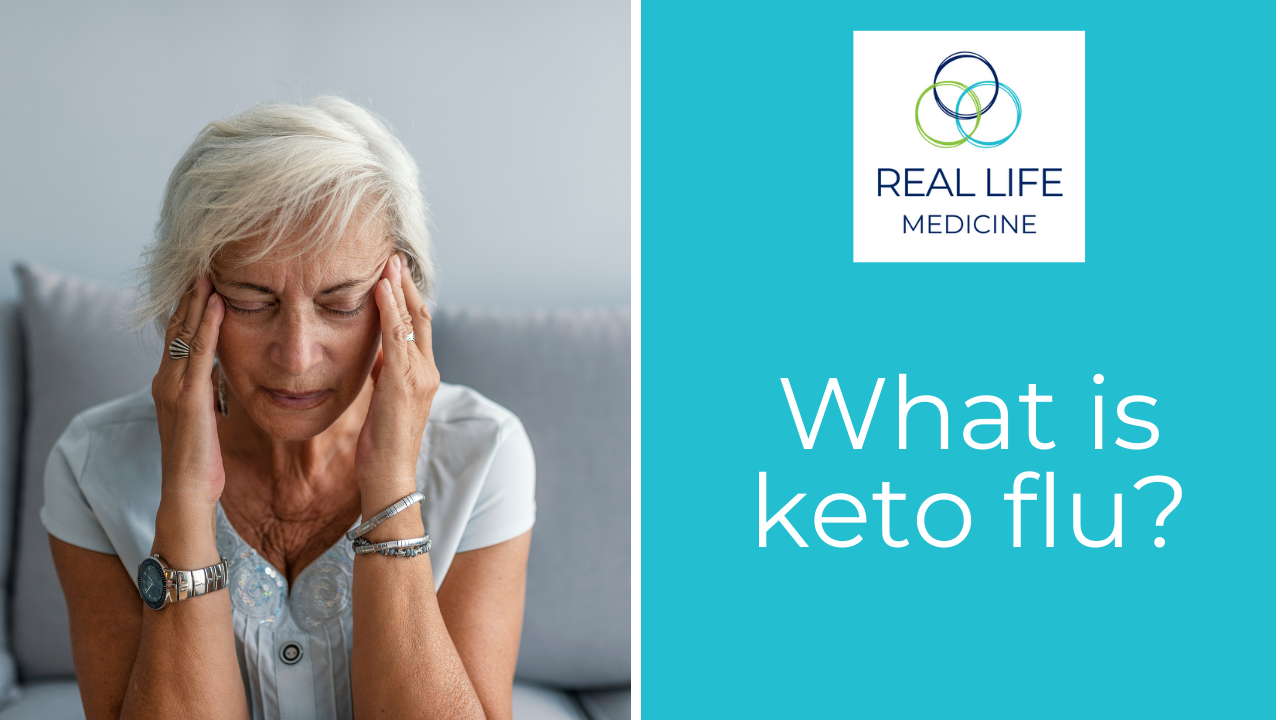
What is Keto Flu?
Jun 08, 2022“Keto flu” is the name many people use to describe the transition period that may occur when you change your diet from a high carbohydrate diet to a low carbohydrate diet. Not everyone gets it. Some people have mild symptoms, and some people have very severe symptoms.
The symptoms of keto flu
- Muscle aches
- Muscle cramps
- Headaches
- Nausea
- Fatigue
- Irritability
- Brain Fog
The cause of keto flu
When we first restrict carbohydrates, the body will empty its glycogen stores. Glycogen is where our body stores carbohydrates and is found in the liver and the muscles. Each gram of glycogen stored in our body is bound to 3 or 4 grams of water. Sodium and water are best friends! So whenever water is moved, sodium follows, creating a huge electrolyte shift. The main electrolytes in our body are sodium, calcium, potassium, chloride, phosphate, and magnesium, but in keto flu, the main ones affected are sodium, potassium, and magnesium.
The other compounding factor is that sodium and glucose share a channel in the kidneys so that when our glucose is low, our body excretes sodium and hence water with it.
You will find that when you first start your low carb or ketogenic diet, you will be urinating more. This is a good sign.
The other thing happening is that your body is transitioning from a carbohydrate burner to a fat burner. Some enzymes need to be upregulated, and others downregulated. This can take time. Once your fat burner enzymes are upregulated, and your body is used to burning fat for fuel, you will find increased mental clarity and energy
How long does Keto Flu Last?
As mentioned, many people have no symptoms, but for those who do, it usually begins on day 3-5 and can last 1-2 weeks
The Treatment of Keto Flu
Prevention is better than cure, so replace the fluid and the electrolytes *** see below.
Fluid
We recommend about 2.5 litres of fluid a day (includes tea, coffee etc.)
Sodium
- 2-3 teaspoons of salt a day (if you are still eating processed foods, this number may need to be reduced)
Potassium
- Found in food like avocados and lemon juice
- Also, lite salt or heart salt (this salt is a blend of sodium chloride and potassium chloride)
Magnesium
- The best supplements are Magnesium Citrate (good for constipation) or Magnesium Glycinate.
- The maximum magnesium supplement per day is 300 mg (see your health care practitioner if you need or are using more)
How should I take electrolytes on a keto diet?
There are numerous ways.
- You can simply add a mixture of normal salt and light salt to your meals.
- You take a magnesium tablet or a powder.
- You use magnesium topically by rubbing oil on your skin or having an Epsom salt bath.
- Drinking both broth also is a great source of electrolytes
- You can drink an electrolyte mix. Beware of many commercial electrolyte mixes as they often have glucose (sugar) in them.
Homemade electrolyte drink to avoid keto flu
1 litre (33oz) of water
¼ cup of lemon juice
1 teaspoon of salt (sea salt or table salt) - more if you are exercising
Magnesium powder (check your packaging - max of 300 mg per day)
Sweetener if it is unpalatable
How long should I take electrolytes for on a low carb or ketogenic diet?
***This is individualised. If you are on blood pressure medications, please see your doctor as many of these medications interfere with the normal way our body manages electrolytes.
At Real Life Medicine, we recommend a real food diet. So you will definitely need to add salt as most of us get the majority of the salt from packaged foods.
Eating a wide variety of real foods will mean that you will get most of your electrolyte requirements. If you are very active and sweat a lot, you will need to replace electrolytes.
If you have muscle fasciculations, heart palpitations (see your doctor first) or cramps, you will probably need to continue electrolytes.

